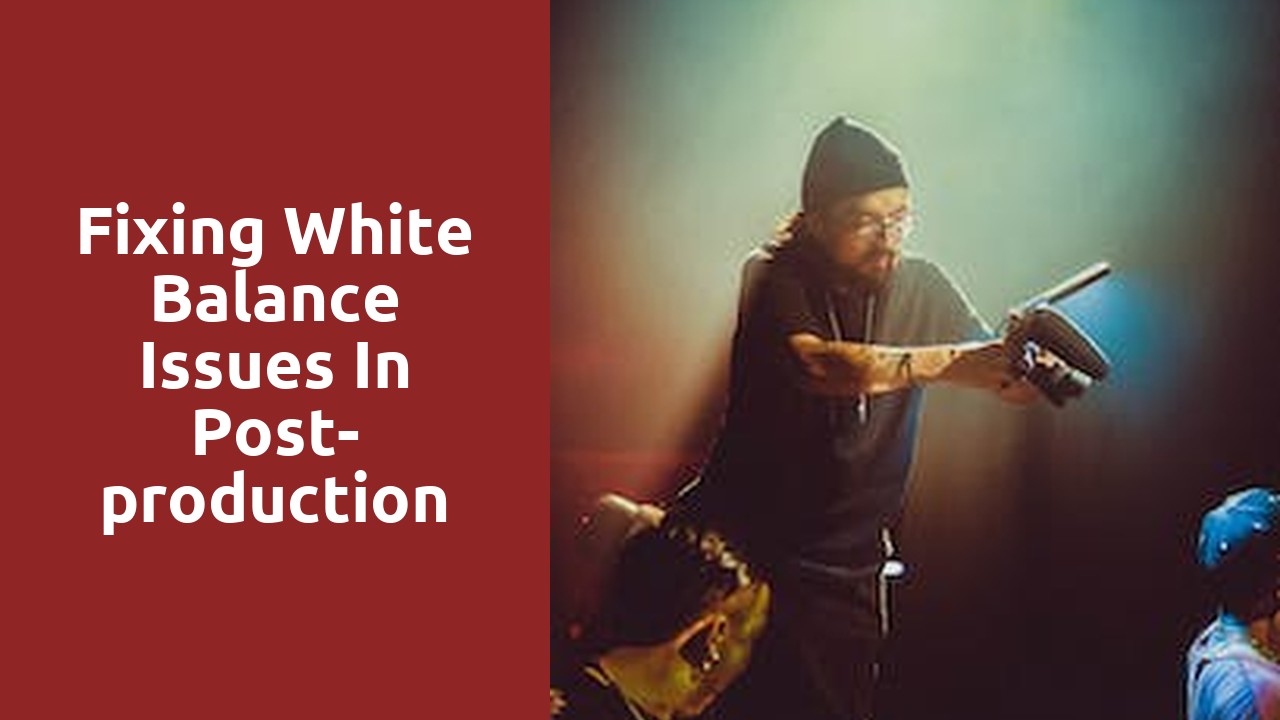
Fixing White Balance Issues in Post-production
Understanding White Balance
White balance is a fundamental concept in photography that often goes unnoticed by amateur photographers. Simply put, it refers to the balance of colors in an image, ensuring that whites appear truly white, regardless of lighting conditions. While our eyes can naturally adjust to different lighting situations, cameras need some help to capture accurate colors. This is where white balance comes into play.
In essence, white balance serves as a calibration tool for your camera, correcting any color casts caused by different light sources. It essentially tells the camera what "white" should look like in a given environment, allowing it to adjust the other colors accordingly. By understanding and applying white balance correctly, photographers can capture images that accurately represent the scene as they saw it, regardless of whether they were shooting under natural sunlight, fluorescent bulbs, or incandescent lighting.
Identifying White Balance Issues
When it comes to photography, one of the common issues that photographers face is white balance problems. White balance refers to the accurate representation of colors in an image. An incorrect white balance can result in images that appear too warm or too cool, giving an inaccurate representation of the subject. To identify white balance issues, it's important to look out for certain signs in your photographs.
The first sign to watch out for is an overall color cast. If your images appear to have a particular dominant color that affects the whole frame, it is likely a white balance issue. For example, if your photos have a blue tint, it means the white balance is set too cool. On the other hand, if there is an orange or yellow cast, it indicates a white balance set too warm. By identifying these color casts, you can address white balance issues and achieve more accurate color representation in your photographs.
The Impact of White Balance on Image Quality
White balance is a crucial aspect of photography that directly affects the overall image quality. It refers to the adjustment of colors in a photograph to accurately represent the true colors of the scene. When the white balance is set correctly, the image appears natural and realistic, allowing viewers to perceive the scene as it was intended to be seen.
Incorrect white balance can lead to noticeable color casts in photographs. For instance, if the white balance is too warm, the image may appear overly yellow or orange. On the other hand, if the white balance is too cool, the image may have a blue or green tint. These color distortions can significantly impact the overall quality of the image, making it look unnatural and unappealing to viewers. Therefore, mastering white balance is essential for photographers looking to capture photos with accurate and pleasing colors.
Common Causes of White Balance Issues
Incorrect white balance can often be a frustrating challenge for photographers. There are several factors that contribute to this issue, and understanding these common causes can help in achieving accurate color representation in your images.
One major factor that affects white balance is the lighting conditions. Different light sources emit varying colors, which can cause a shift in the white balance of your photos. For example, indoor lighting often has a warm orange tone, while daylight tends to have a cooler blue tone. It is crucial to recognize the type of lighting you are working with and adjust your camera settings accordingly to maintain accurate white balance.
Another cause of white balance issues is the camera's automatic white balance setting. While cameras are equipped with advanced technology to calculate the correct white balance, they are not always perfect. Certain scenes or lighting conditions can confuse the camera's sensors, resulting in an inaccurate white balance reading. Therefore, it is recommended to experiment with different white balance presets or use the custom white balance setting to manually adjust the colors based on your specific shooting conditions.
Utilizing Software Tools for White Balance Correction
In today's digital era, photographers have access to an array of software tools that can significantly enhance their images. One such tool that has revolutionized the way we approach photography is white balance correction software. This powerful feature allows photographers to adjust the colors in their images, ensuring accurate representation of white tones and ultimately resulting in more visually pleasing photographs.
White balance is a critical aspect of photography, as it determines the overall warmth or coolness of the image. By utilizing software tools specifically designed for white balance correction, photographers can easily fine-tune the color temperature of their images. Whether it's correcting the blueish cast of indoor shots or removing the yellowish tint caused by artificial lighting, these software tools provide a quick and effective solution. Moreover, they offer a level of precision and control that traditional methods, such as using physical color correction filters, cannot match. With just a few clicks, photographers can transform their images to better reflect the true colors and create a more captivating visual impact.
Adjusting Temperature and Tint for White Balance Correction
When it comes to achieving accurate white balance in your photographs, adjusting the temperature and tint settings can make a significant difference. The temperature setting controls the overall warmth or coolness of the image, while the tint setting adjusts the green or magenta tones. By finding the right balance between these two parameters, you can ensure that the colors in your photo appear natural and true to life.
The first step in correcting white balance is adjusting the temperature. If your image appears too warm, you can cool it down by decreasing the temperature setting. Conversely, if your photo looks too cool, increasing the temperature will add warmth. Keep in mind that white balance adjustments can be subjective and depend on the desired aesthetic for your image. Experiment with different temperature values to create the desired mood or atmosphere.
Related Links
Enhancing Skin Tones through Color Correction in VideosColor Correction Software for Videographers